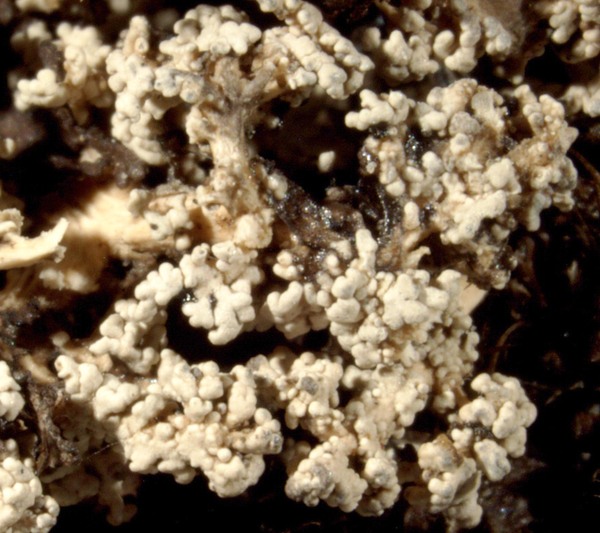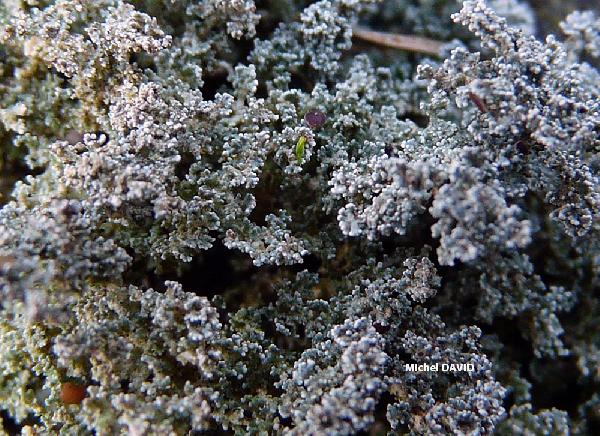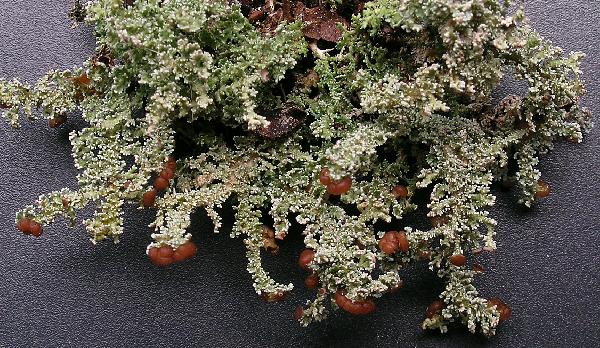Stereocaulon evolutum Graewe
Bot. Notiser: 181, 1865.
Synonyms: Stereocaulon spissum Nyl. ex Hue var. laxum Frey
Distribution:
Description: Primary thallus crustose, ephemeral, usually absent in mature individuals, secondary thallus fruticose, forming up to 6 cm wide, more or less compact cushions. Pseudopodetia loosely attached to the rock, slender, ascending or prostrate with curved tips, grey, rigid, 1-3 cm high, irregularly branched from the base, dorsiventral, esorediate, with a solid cartilaginous axis of parallel hyphae surrounded by a lax medulla, not tomentose (a grey tomentum may be rarely present only in the apical parts). Phyllocladia often crowded in apical parts of pseudopodetia, squamulose, flattened, deeply divided into more or less cylindrical lobes, often overlapping and concealing the pseudopodetia, the lower surface glabrous, olive-grey. Cephalodia inconspicuous, olive-brown, with Stigonema. Apothecia extremely rare, terminal, brown, up to 1 cm across. Proper exciple brown in outer part, colourless within; epithecium brown, K-; hymenium colourless, 55–65 µm high; paraphyses simple, slightly thickened above, with a dark cap; hypothecium colourless. Asci 8-spored, clavate to cylindrical, unitunicate, the tholus I+ blue; in K/I with a blue outer layer, and a blue apical dome with a central, darker blue tube, approaching the Porpidia-type. Ascospores mostly 3-septate, hyaline, characteristically broadly fusiform, 15-25(-30) x 4-5.5 µm. Main photobiont chlorococcoid. Spot tests: K+ yellow, C-, KC+ violet (reaction often difficult to observe macroscopically, best evident on acetone extract on filter paper!), P+ faintly yellow, UV+ blue-white. Chemistry: atranorin and lobaric acid.
Note: widespread in Europe, but most common in the west, surprisingly with a few records from the Eastern Alps only (Austria); to be looked for in the Italian Alps.
Growth form: Fruticose
Substrata: rocks
Photobiont: green algae other than Trentepohlia (primary); cyanobacteria, filamentous (e.g. Nostoc, Scytonema) (secundary, e.g. in cephalodia)
Reproductive strategy: mainly sexual
Commonnes-rarity: (info)
Alpine belt: absent
Subalpine belt: absent
Oromediterranean belt: absent
Montane belt: absent
Submediterranean belt: absent
Padanian area: absent
Humid submediterranean belt: absent
Humid mediterranean belt: absent
Dry mediterranean belt: absent
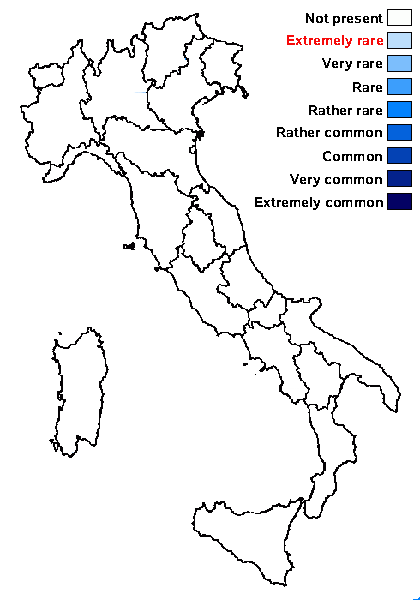
Predictive model
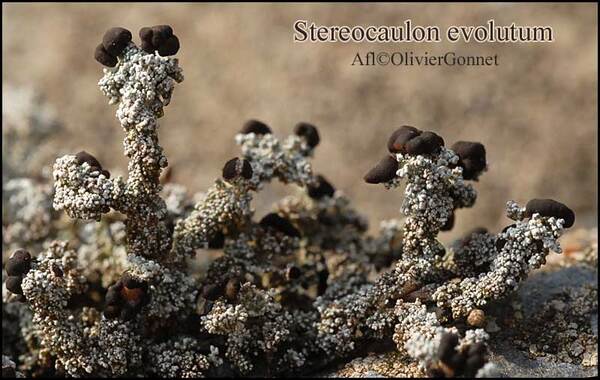
Courtesy Danièle et Olivier Gonnet - Source: https://www.afl-lichenologie.fr/Photos_AFL/Photos_AFL_S/Stereocaulon_evolutum.htm
France, session AFL 2007 - Finistère
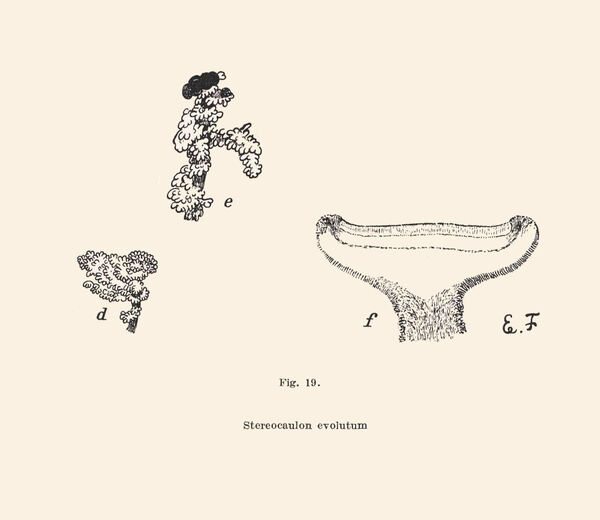
Frey E. 1933. Cladoniaceae (unter Ausschluß ded Gattung Cladonia) und Umbilicariaceae. In: Rabenhrst’s Kryptogamenflora von Deutschland, Österreich und der Schweiz. 15: 1-208.
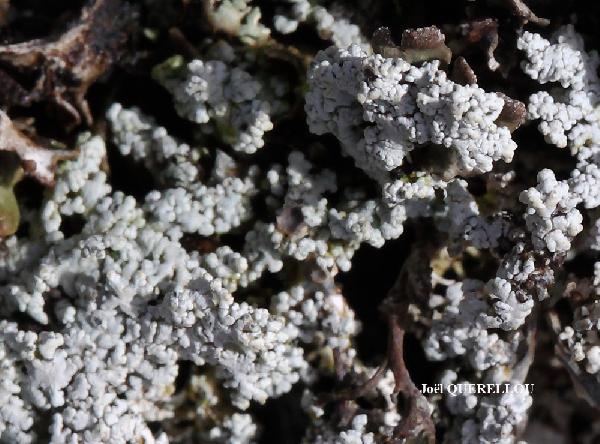
Joël Querellou - Source: http://www.lichensmaritimes.org/index.php?task=fiche&lichen=393&lang=en
Belgium, Menez-Meur
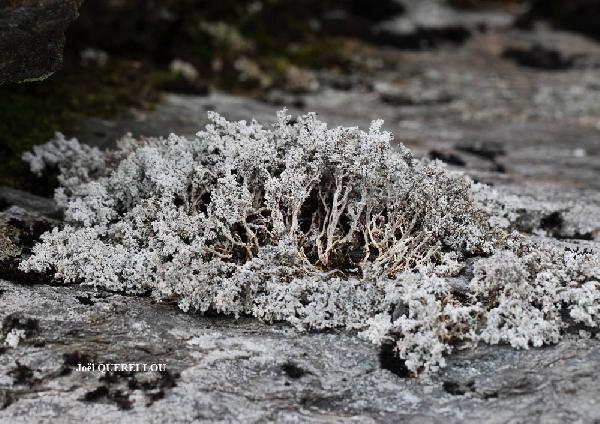
Joël Querellou - Source: http://www.lichensmaritimes.org/index.php?task=fiche&lichen=393&lang=en
Belgium, Menez-Meur
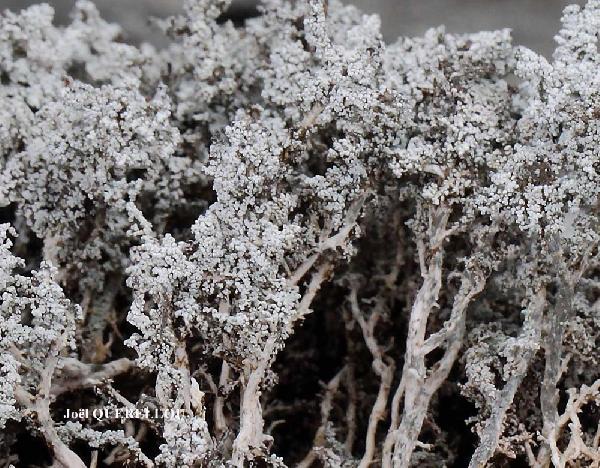
Joël Querellou - Source: http://www.lichensmaritimes.org/index.php?task=fiche&lichen=393&lang=en
Belgium, Menez-Meur

Michel David - Source: http://www.lichensmaritimes.org/index.php?task=fiche&lichen=393&lang=en
France, Roc'h Tredudon
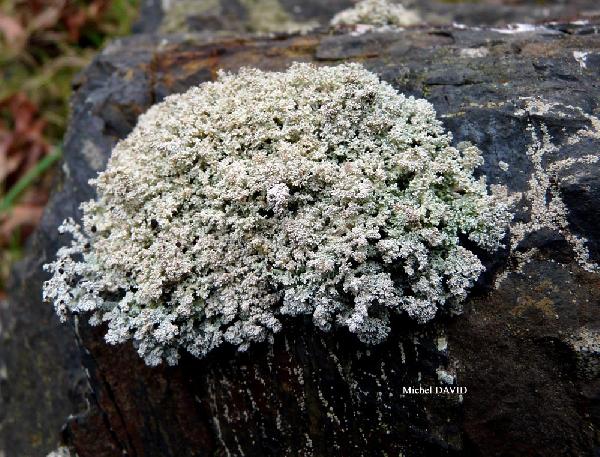
Michel David - Source: http://www.lichensmaritimes.org/index.php?task=fiche&lichen=393&lang=en
France, Morgat

Alain Gerault - Source: http://www.lichensmaritimes.org/index.php?task=fiche&lichen=393&lang=en
France, Menez-Meur
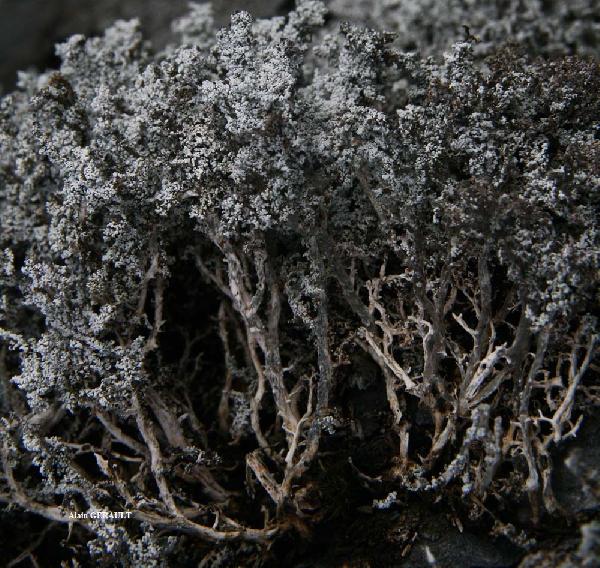
Alain Gerault - Source: http://www.lichensmaritimes.org/index.php?task=fiche&lichen=393&lang=en
France, Menez-Meur
Growth form: Fruticose
Substrata: rocks
Photobiont: green algae other than Trentepohlia (primary); cyanobacteria, filamentous (e.g. Nostoc, Scytonema) (secundary, e.g. in cephalodia)
Reproductive strategy: mainly sexual
Commonnes-rarity: (info)
Alpine belt: absent
Subalpine belt: absent
Oromediterranean belt: absent
Montane belt: absent
Submediterranean belt: absent
Padanian area: absent
Humid submediterranean belt: absent
Humid mediterranean belt: absent
Dry mediterranean belt: absent

Predictive model

Courtesy Danièle et Olivier Gonnet - Source: https://www.afl-lichenologie.fr/Photos_AFL/Photos_AFL_S/Stereocaulon_evolutum.htm
France, session AFL 2007 - Finistère

Frey E. 1933. Cladoniaceae (unter Ausschluß ded Gattung Cladonia) und Umbilicariaceae. In: Rabenhrst’s Kryptogamenflora von Deutschland, Österreich und der Schweiz. 15: 1-208.

Joël Querellou - Source: http://www.lichensmaritimes.org/index.php?task=fiche&lichen=393&lang=en
Belgium, Menez-Meur

Joël Querellou - Source: http://www.lichensmaritimes.org/index.php?task=fiche&lichen=393&lang=en
Belgium, Menez-Meur

Joël Querellou - Source: http://www.lichensmaritimes.org/index.php?task=fiche&lichen=393&lang=en
Belgium, Menez-Meur

Michel David - Source: http://www.lichensmaritimes.org/index.php?task=fiche&lichen=393&lang=en
France, Roc'h Tredudon

Michel David - Source: http://www.lichensmaritimes.org/index.php?task=fiche&lichen=393&lang=en
France, Morgat

Alain Gerault - Source: http://www.lichensmaritimes.org/index.php?task=fiche&lichen=393&lang=en
France, Menez-Meur

 INDEX FUNGORUM
INDEX FUNGORUM
 GBIF
GBIF
